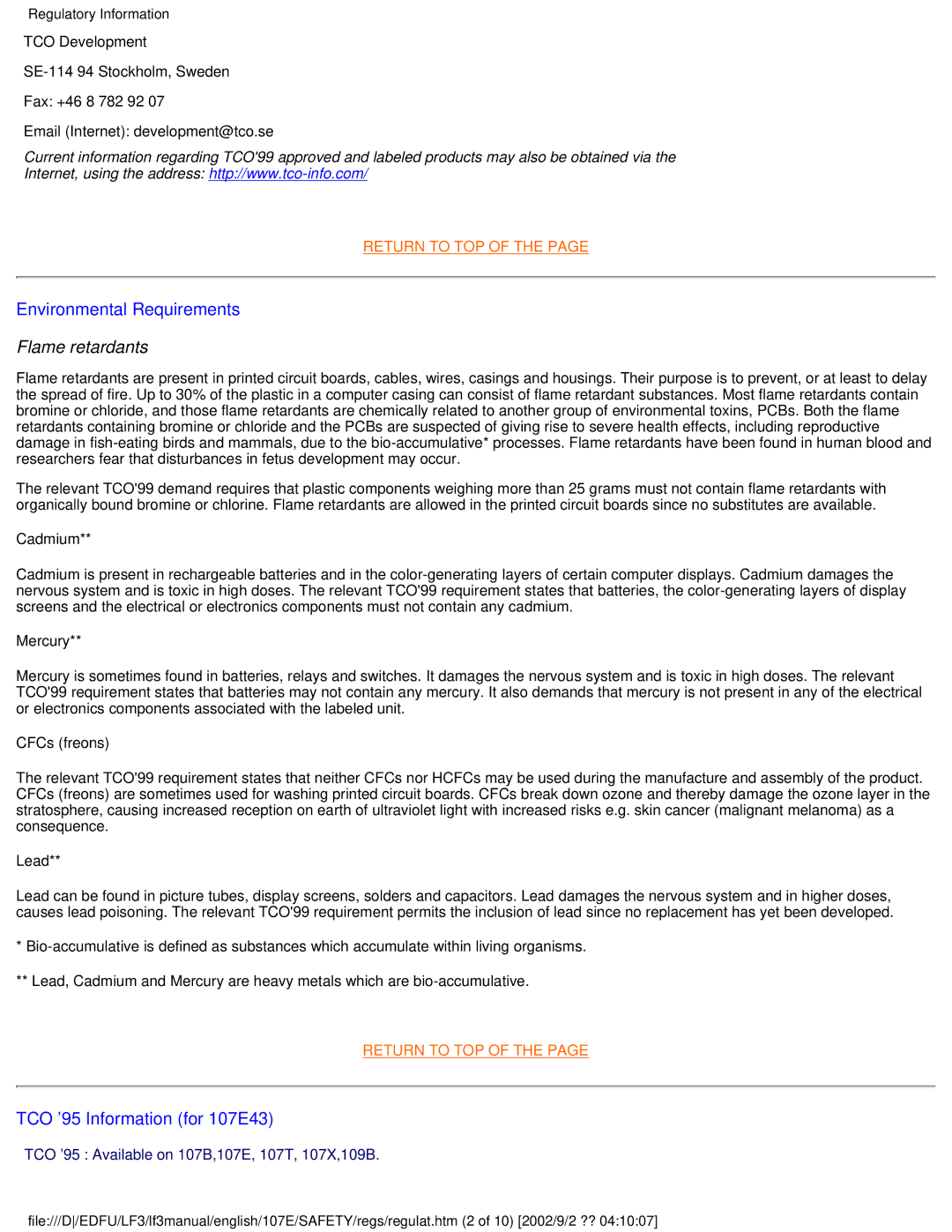107S4, 109S4, 107E43, 107F4, 107T4 specifications
Philips, a renowned name in the world of electronics, is well-known for its dedication to producing high-quality monitors. Among its offerings, the Philips 107B4, 105B2, 109B4, 107T4, and 107F4 models stand out due to their combination of innovative features, performance, and reliability.The Philips 107B4 is notable for its exceptional display quality, providing a crisp and vibrant picture. It features a 17-inch screen with a resolution of 1280 x 1024 pixels, making it ideal for various applications, from office work to graphic design. This model incorporates a flat screen technology that minimizes glare and reflections, enhancing viewer comfort during long hours of use. Its eco-friendly design includes energy-saving capabilities, reducing power consumption while maintaining superior visual performance.
Similarly, the Philips 105B2 is designed with the user in mind, featuring a 15-inch screen size that suits small workspaces or personal use. It boasts a resolution of 1024 x 768 pixels, delivering sharp and clear images. This model incorporates a compact form factor and lightweight design, allowing for easy installation and maneuverability. Its multi-functionality lends itself well to home entertainment and casual gaming, providing versatility for different user needs.
With the Philips 109B4, users benefit from a larger viewing area with a 19-inch screen that enhances productivity and immersion. It supports a higher resolution, accommodating diverse applications like video editing and coding. The 109B4 is equipped with advanced color reproduction technology, ensuring accurate and vibrant colors that professionals demand in graphic-heavy tasks. Its connectivity options include multiple input interfaces, facilitating connections to various devices.
The Philips 107T4 offers unique features such as Touch technology, enabling intuitive interaction directly with the screen. This model is designed for educational environments and collaborative workspaces, making it easier for users to engage with content. The touch functionality is complemented by a durable design that withstands frequent usage, ensuring longevity and performance.
Finally, the Philips 107F4 rounds out this impressive lineup with its futuristic design and functionality. It includes features like a fast refresh rate, providing smooth visuals during motion-intensive applications. Its adjustable stand promotes ergonomic viewing angles, reducing strain during extended use. Moreover, the 107F4 is equipped with energy-efficient technologies that comply with modern environmental standards.
In summary, these Philips monitor models exemplify the brand’s commitment to quality and innovation, catering to a variety of user needs while incorporating effective technologies that enhance the overall viewing experience. With a blend of ergonomic designs, eco-friendly materials, and superior display capabilities, Philips continues to set the standard for monitors in both professional and personal settings.

